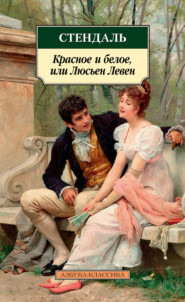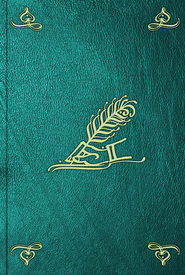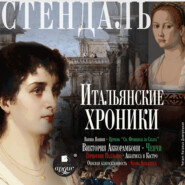По всем вопросам обращайтесь на: info@litportal.ru
(©) 2003-2024.
✖
The Roman Tales
Настройки чтения
Размер шрифта
Высота строк
Поля
In Italy, a man could distinguish himself as much by the discovery of an old manuscript as by the sword … A sixteenth-century woman would love a man who was versed in ancient Greek as much or more than one renowned for his courage in war. Passions rather than gallantry held sway.
A short note to the reader on the first pages of The Charterhouse of Parma states that ‘the Italians are sincere, honest folk and … say what is in their minds; it is only when the mood seizes them that they show any vanity; which then becomes passion …’ Again, in a preface to his story of the Duchess of Palliano, Stendhal speaks of ‘the unfettered passion that appeared in Italy in the sixteenth and seventeenth centuries and that died out in our time owing to the aping of French customs and Parisian fashion’. He tells us he will not in his translation ‘make any attempt to adorn the simplicity, the occasionally startling crudeness’ of the narrative. He saw that the essence of this passion rested on the fact that it sought its own satisfaction and was not bound up in vanity. Such passionate feeling required deeds, not words. Stendhal warned his readers that very little conversation would be found in his Italian tales. ‘This is a handicap to my translation, accustomed as we are in our fiction to long conversations by the characters …’
All these claims except one are perfectly illustrated in his story of the tragic love affair of Giulio Branciforte and Elena de’ Compireali. The remark about long conversations, however, is a flat contradiction of what he wrote, the way he wrote it, and of the resulting spell he cast in The Abbess of Castro.
Marie-Henri Beyle, best known by his favourite pen name Stendhal, was born in Grenoble on 23 January 1783. His immediate family was pious, royalist, and firmly conservative, whereas from an early age young Beyle came to despise convention, was an atheist, and, as a follower of Napoleon, a fervent advocate of the French Revolution.
The details of his life, the range of his experiences, his tireless travels, are truly extraordinary. He adored women and had countless women friends and lovers, none forgettable, none forgotten, and all his liaisons ultimately unsuccessful; he never married. He understood women and wrote about them in a way that is revolutionary and still unmatched. His female characters Madame de Rênal and Mathilde de la Mole (The Red and the Black), Gina Sanseverina and Clelia Conti (The Charterhouse of Parma), Vittoria Carafa and Elena de’ Campireali (The Abbess of Castro), and even Lamiel in the author’s last and unfinished eponymous novel, are among the greatest creations in all literature.
Beyle left Grenoble for Paris at the end of 1799, whereupon influential relatives got him a post as a lowly clerk in the Ministry of War. He was only seventeen when in May 1800 he was allowed to follow Napoleon’s army into Italy, where he found a position doing clerical work for the governor of Lombardy. Here he fell in love with Italy, with Italian opera, with Milan, and was enthralled by the city’s relaxed atmosphere. Later he was to write, ‘were I to follow nothing but my inclination, I should never set foot outside Milan.’ By September he was appointed a sub-lieutenant in the dragoons (without knowing how to ride a horse) and aide-de-camp of General Claude Michaud.
Thus began a farcical army career, which he really detested, but that allowed him to witness battles in Austria, Germany, and Russia. In 1812 he saw the torching of the Russian capital and soon after joined in the French army’s ill-fated retreat from Moscow.
After the fall of Napoleon Beyle retired to Italy, where he lived the life of a penurious dilettante and began to write. His first books, lives of Haydn, Mozart, and Metastasio, and a history of Italian painting, were largely cribbed compilations – a practice widespread at the time – that he signed with different pen names. It is said that, as a form of protective cover, Beyle used in his life and in his writing up to a hundred different pseudonyms.
There followed a series of travel books on Italy, whose cities and towns he explored and researched assiduously. The chatty volume Rome, Naples et Florence en 1817 was his first success as an author; the French text was reissued in London in 1817, and the next year appeared in an English translation. This was the earliest of his books to bear the pen name Stendhal. In 1822 he published a semi-didactic, semi-autobiographical dissertation on love.
Armance, the first of his novels, appeared in 1827, followed three years later by The Red and the Black. In 1830 he entered the civil service and was appointed consul at Civitavecchia. The post he really coveted was at Austrian Trieste, but Stendhal’s association with Italian patriots who were plotting for national independence made him a persona non grata with the Austrians, and he was turned down. With little else to do in sleepy Civitavecchia, he began the novel Lucien Leuwen, which he left unfinished and which remained unpublished until 1894. From 1836 to 1839 he took sick leave and returned to Paris, where he began a life of Napoleon and completed two more novels, The Charterhouse of Parma and The Abbess of Castro.
For a while Stendhal supported himself by journalism, writing cultural articles for three or four English reviews. He also kept a diary and undertook a series of autobiographical writings, all unpublished in his lifetime. His fiction, while admired by a small circle of literary figures such as Balzac and Mérimée, did not sell, and the general public found his work incomprehensible and eccentric. The proverbial outsider, he himself predicted that his books would only be discovered and read fifty years after his death. This proved an uncannily accurate assessment.
Beyle died in Paris on 23 March 1842 and was interred in Montmartre cemetery. It is said that three persons attended the funeral.
Susan Ashe’s translation, designed for the contemporary reader, concentrates on the narrative drive and drama of each story. This has meant taming a number of the author’s excesses. Stendhal, who wrote and dictated with notorious speed, is guilty in descriptive passages of the careless repetition of words and phrases that today we find only clumsy and annoying. Another peccadillo, eliminated in the current version, is his now pointless footnotes that translate for us the value of items in terms of French currency of the 1830s. Also eliminated are footnoted references to obscure works such as Montesquieu’s Politique de Romains dans la religion or Saint-Simon’s Mémoires de l’abbé Blache, which it is doubtful any reader today would trouble themselves over. The chief items to have been pruned, however, are the repeated references in The Abbess of Castro by which Stendhal sought to convince us that the story is not his but the work of Florentine and Roman antiquarians. These passages are both feeble and unconvincing.
Of course, the above confessions will offend purists. The field of translation is awash with quibbles regarding purity and fidelity. A good translation, however, does not try to duplicate the original but strikes out on its own. Anyone wishing to read Stendhal untouched and unadulterated can do so ungrumblingly in the author’s native French.
‘Vittoria Accoramboni’ was first published, unsigned, in La Revue des deux mondes, 1 March 1837. It should be pointed out that Webster’s 1612 play The White Devil was based on this same story.
‘Les Cenci’, also unsigned, made its first appearance in La Revue des deux mondes, 1 July 1837.
‘L’Abbesse de Castro’, under the pen name F. de Lagenevais, saw first light in La Revue de deux mondes, 1 February and 1 March 1839. When The Abbess was published in book form the author’s name appeared as Stendhal.
Stendhal’s works are currently issued, with more to come, in seven volumes in the Bibliothèque de la Pléiade.
Norman Thomas di Giovanni
Keyhaven, Lymington
Hampshire
January 2012
THE ABBESS OF CASTRO
I
Sixteenth-century Italian brigands have so often been depicted in melodrama, and so many people have talked about them without knowing anything, that our impression of these outlaws is now utterly false. Broadly speaking, they could be called the opposition to the appalling governments which, in Italy, followed upon the medieval republics. A defunct republic’s richest citizen generally became the new tyrant, and, to curry favour with the common people, he would lavish on a town fine paintings and magnificent churches.
Of such were the Polentini clan of Ravenna, the Manfredi of Faenza, the Riario of Imola, the Cani of Verona, the Bentivoglio of Bologna, the Visconti of Milan, and last – the least martial but most hypocritical of all – the Medici of Florence. None of the historians of these small principalities dared mention the countless poisonings and assassinations that the fear gripping these petty tyrants demanded, for all these earnest chroniclers were in their pay. When we realize that each of the tyrants knew intimately each of the republicans who hated him (the Tuscan Grand Duke Cosimo, for instance, was well acquainted with Strozzi) and that many of these tyrants were themselves assassinated, we can fathom the deep hatred and endless distrust that endowed sixteenth-century Italians with such spirit and courage and their artists with such inspiration.
In sixteenth-century France a man could show his manhood and true mettle – and win admiration for bravery – only on the battlefield or in a duel. And as women love bravery and daring, they became the supreme judges of a man’s worth. Thus gallantry was born. This led to the successive destruction of all passions, including love, thereby benefitting that cruel tyrant whom we all obey – vanity. Kings nurtured vanity, and with good reason. Thus the potency of medals and honours.
In Italy a man could distinguish himself as much by the discovery of an old manuscript as by the sword. Look at Petrarch, the idol of his times. A sixteenth-century woman would love a man who was versed in ancient Greek as much or more than one renowned for his courage in war. Passions rather than gallantry held sway. This is why Italy gave birth to a Raphael, a Giorgione, a Titian, and a Correggio, while France produced all the brave commanders of the sixteenth century, each of whom slew numberless numbers of the enemy and yet today are utterly unknown.
Forgive me for speaking the blunt truth. The cruel but necessary acts of revenge committed by medieval petty tyrants reconciled the people to banditry. Brigands were hated when they stole horses, grain, money – in short, all the necessities of life – but in their hearts the people sided with these outlaws. Village maidens favoured above all others the young man who was forced at least once in his life, because of some reckless deed, to flee to the woods and seek refuge among brigands.
Nowadays everyone dreads an encounter with brigands, but, when they are caught and punished, we all sympathize with them. The fact is that shrewd, cynical people, who mock all edicts issued by their masters, revel in reading little poems that glowingly describe the lives of well-known outlaws. What is seen as heroic in these stories thrills the artistic vein that still survives in the lower classes. Moreover, they are so tired of the official praise doled out to certain parties that anything unofficial goes straight to their hearts.
We should understand that in Italy the common people suffer from problems that the tourist wouldn’t be aware of even if he lived in the country for a decade. Fifteen years ago, for example, before the government in its wisdom stamped out brigands, it was not unusual to find that some of their exploits punished the crimes of small-town governors. These governors, absolute despots who were never paid more than twenty scudi a month, were naturally at the beck and call of the most important family, which, accordingly, was able to oppress its enemies.
If the brigands weren’t always able to punish these petty despots, at least they taunted and defied them, which is no small thing in the eyes of a quick-witted people. A satirical sonnet could make up for all their ills, and they never forgot an insult. This is another of the big differences between the Italian and the Frenchman.
In the sixteenth century, if the governor of a town sentenced to death some poor soul hated by an influential family, brigands would often launch a raid on the prison and try to free the victim. The powerful family, not placing much trust in the eight or nine government soldiers guarding the prison, would at its own expense levy an ad hoc militia. These men, known as bravi, would camp near the prison and escort to the place of execution the poor devil whose death had been purchased. A young man from the powerful family would be made captain of these novice soldiers.
Such a situation must surely have made upright men groan. Nowadays we have duels and boredom, and judges do not sell themselves, but sixteenth-century customs were marvellously suited to creating men worthy of the name.
Many historians, still praised in the hack writing of academics, have tried to conceal this state of affairs, which around 1550 was shaping such great individuals. In their day these historians were rewarded for their tactful lies with all the honours that the Medici of Florence, the d’Este of Ferrara, and the viceroys of Naples could bestow. One unfortunate historian, Pietro Giannone, tried to lift a corner of the veil but as he only dared tell part of the truth – and in the local dialect – what he wrote was not understood, which did not prevent him from dying in prison on 7 March 1758 at the age of eighty-two.
If anyone wants to know the history of Italy, the important thing is not to read the widely accepted authors. Nowhere has the value of a lie been better appreciated, nowhere better paid.
Even the earliest histories of Italy, written after the great barbarian wave of the ninth century, mention brigands and speak of them as if they’d existed from time immemorial. When, unfortunately for the general well-being of the people and justice and good government – but fortunately for the arts – the medieval republics were overturned, the most active republicans, who loved freedom more than a good many of their fellow citizens, took refuge in the forests. Naturally, anyone persecuted by the Baglioni, the Malatesta, the Bentivoglio, the Medici, and so forth, loved and respected the enemies of these tyrants. The cruel practices of the petty rulers who succeeded the early usurpers – for instance, the brutality of Cosimo, the first Duke of Florence, who’d assassinated the republicans who had fled to Venice and Paris – sent recruits to the brigands.
If we consider only the period when our heroine lived – around 1550 – Alfonso Piccolomini, Duke of Monte Mariano, and Marco Sciarra successfully led armed bands which, near Albano, defied the pope’s own brave soldiers. The territory of these notorious chieftains stretched from the Po and the Ravenna marshes to the forests which then clothed the slopes of Vesuvius. The Faggiola forest, Sciarra’s stamping ground – five leagues from Rome along the road to Naples – was made famous by his exploits. Here, several times during the papacy of Gregory XIII, Sciarra assembled a band of several thousand soldiers. An accurate account of this brigand’s history would seem incredible to the present generation, none of whom could begin to unravel the motives for his deeds. He was undefeated until 1592. When at last he realized the desperate straits he was in, he made terms with the Venetian Republic and, with his most trusted (or most guilty) soldiers, went into its service. On the request of the Roman government, Venice, which had signed a treaty with Sciarra, had him put to death and sent his brave soldiers to defend the island of Crete against the Turks. The crafty Venetians knew that a deadly plague was raging there, and in few days Sciarra’s five hundred men were reduced to sixty-seven.
The Faggiola forest, whose gigantic trees clothe an extinct volcano, was the scene of Marco Sciarra’s final exploits. Travellers will tell you that this is the most magnificent part of the Roman plain and that its sombre aspect seems made for tragedy. Its dark foliage crowns the summit of Monte Albano.
A volcanic eruption many centuries before the founding of Rome gave birth to this imposing mountain. It emerged from a wide plain which then stretched from the Apennines to the sea. Monte Cavo, which rises from the gloomy shade of the Faggiola wood, is the highest point. The panorama extends from Terracina to Ostia and from Rome to Tivoli. Monte Albano, now decked out in palazzi, comprises Rome’s southern horizon, which is so instantly recognizable to travellers.
A Blackfriars monastery on top of Monte Cavo has replaced the temple of Jupiter Feretrius, where the Latin peoples offered sacrifices and strengthened the bonds of a sort of religious federation. In a few hours, shaded by the branches of huge chestnut trees, the traveller will reach the great stones which are the remnants of the temple of Jupiter. But beneath the dark foliage, so welcome in this climate, even the modern traveller, fearing brigands, nervously eyes the forest depths.
On the summit of Monte Cavo, you may light a fire in the temple ruins to prepare a meal. West from this spot, the sea seems but a step or two away although it is really three of four leagues. You can glimpse tiny boats. Even with weak binoculars you can count the passengers on the Naples steamer. In every other direction, the view takes in the magnificent plain which, beyond Palestrina, is bordered in the east by the Apennines and to the north by St Peter’s and other great Roman buildings. Since Monte Cavo is not high, the eye can pick out every tiny detail of this superb landscape, which could dispense with any historical association were it not for the fact that each clump of trees, each section of ruined wall on the plain or on the hillside bears witness to a battle, recorded by Livy and famed for its patriotism and courage.
To reach the remnants of the temple of Jupiter Feretrius, whose huge stones now wall the Blackfriars’ garden, we take the triumphal way trodden by the first kings of Rome. The road is paved with regularly cut slabs. Long stretches have been found in the middle of the Faggiola forest.
Inside the rim of the extinct crater, which is five or six miles round, is the lovely lake of Albano. Here, deeply embedded in the lava rock, stood Alba, the forerunner of Rome, which the Romans destroyed in the days of the early kings. Its ruins are still here. Several centuries later, a quarter of a league from Alba, modern Albano grew up on the flank of the mountain facing the sea. But the town is separated from the lake by a curtain of rocks, so that the one is hidden from the other. Seen from the plain, Albano’s white buildings rise out of the dark foliage of the forest, much loved by brigands and by writers, that clads every side of the volcanic mountain.
Now a town of five or six thousand inhabitants, Albano had only three thousand in 1540, when the powerful Campireali family, whose ill-fated tale we are about to tell, was among the leading ranks of the nobility.
This story has been translated from two long manuscripts, one Roman, the other Florentine. At my peril I have ventured to reproduce their style, which is akin to that of our old legends. The more refined style of the present age would, I think, be out of keeping with the authors’ observations and the events they describe. They were writing in about 1598. For them and for myself, I beg the reader’s indulgence.
II
After recording numerous tragic stories, says the author of the Florentine manuscript, he will end with the one he found the most painful. This is the tale of the notorious Elena de’ Campireali, Abbess of the Convent of the Visitation in Castro, whose trial and death gave Roman and Neapolitan society so much food for gossip.
In 1555, while brigands roamed the outskirts of Rome, magistrates were in the pay of powerful families. In the year 1572, when the abbess’s trial took place, Pope Gregory XIII came to the throne of St Peter. This holy pontiff possessed all the apostolic virtues but his civic rule could be accused of certain weaknesses. He neither chose honest judges nor controlled the brigands; he fretted over crimes but felt unable to punish them. He believed that in inflicting the death penalty he was taking on a fearful responsibility.
As a consequence, the roads to the eternal city were infested by an endless host of brigands. To travel safely one had to befriend the outlaws. The Faggiola forest, which straddles the road from Albano to Naples, had for many years been the headquarters of a force hostile to His Holiness, and often Rome had to make treaties, as if with a foreign power, with Marco Sciarra, one of the kings of the forest. The brigands’ strength lay in the fact that they were liked by their peasant neighbours.

















